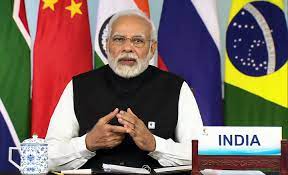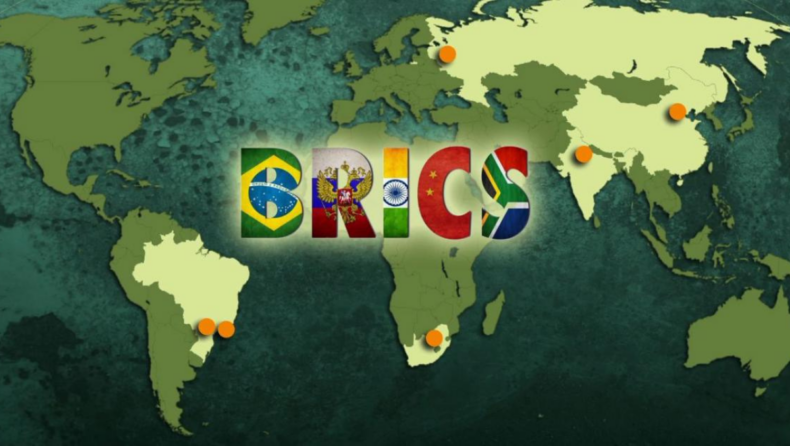The 15th BRICS Summit is meeting today at Sandton, the financial capital of Johannesburg, in South Africa for a 3 day conference from 22nd August- 24th August to discuss their cooperation and contribution towards the political and economic arenas of the developing world and the emerging global order.
History
BRICS is an acronym for Brazil, Russia, India, China and South Africa. The term “BRIC” was first used by Jim O’Neill , a Goldman Sachs economist in his publication, “Building Better Global Economic BRICs” in the year 2001. This paper highlighted the investment potential of these BRIC countries and argued that their probable GDP growth in the future will have implications on global governance.

The BRIC leaders then met for the first time in St. Petersburg on the sidelines of a G8 Summit in July 2006. The group was formalised in September 2006 at its first Foreign Ministers Meeting held in New York City. The 1st BRIC summit was later held in Yekaterinburg, Russia on 16th June 2009. In 2010, South Africa was added to the bloc and the grouping was renamed BRICS.
The Global South Potential and Role of BRICS

As per the World Bank Data of 2019, BRICS nations constitute 41% of the world’s population, 24% of Global GDP and 16% of world trade. These numbers are a partial representative of the Global South and highlight the space and potential that it has to offer with BRICS acting as an essential forum for it. As almost 40 countries wait in anticipation for their membership in the grouping, BRICS showcases the growing divergence of the world from the west and an increasing inclination towards the South.
The BRICS alliance then can act as a bridge between countries of the Global South. The countries of the Global South, if not divided by their geopolitical rivalries have the potential to become a self sufficient region with zero dependency on the west. With a robust manufacturing sector in China, technological capabilities of Japan, energy resources of Russia, service sector of India and South Africa’s resource of metals and base metals with populated markets across the region with a diverse consumer base, the Global South working under the alliance of the BRICS countries can outgrow western economy and counter its hegemonic influence.
However, historical alliances and events have been in favour of the West allowing it to harness the divisiveness in the Global South. The countries, as a result, remain divided because of their varied political ideologies, competing for the leadership of global south, overwhelmed by issues of boundaries and instability in their neighbourhood. This makes alliances like BRICS feel trapped by the differences between its member countries and makes its long term vision a blur.
Futuristic Potential of BRICS
It is thus important to recognise BRICS for its long term goal and vision. It is an emergent alliance and its potential lies in its ability to provide a platform for newly emerging markets and economies. The very diverse nature of this alliance which has often been the source of its criticism is also what makes it attractive. This diversity then becomes symbolic of multilateralism, promising an equal voice in the dynamics of global governance. Whether it is de-dollarisation or neo-colonisation, it promises opposition to any linear mapping of global order. As the nations then navigate through the dynamism of the current World Order, the inclusivity of BRICS promises representation in the future of multi-polarity.
India in BRICS

India being one of the founding members of the Non Aligned Movement makes its membership at BRICS valuable. It represents its exercise of neutrality and fairness in the geopolitical system. Moreover, its close relations with countries at opposing poles makes it an important player in the BRICS alliance.
Its approach to democratise multilateralism outlined in Norms: New Orientation for a Reformed Multilateral System, a policy paper published by the Ministry of External Affairs in 2022, outlined five key pillars of India’s approach to reform the multilateral forums – (1) Samman (Respect); (2) Sambvad (Dialogue); (3) Sahyog (Cooperation); (4) Shanti (Peace) (5) Samriddhi (Prosperity). This makes India a promising player in determining the significance and future course of BRICS in cooperation with its other member states.
Thus, the success of BRICS lies in harnessing the potential of Global South and acting as a facilitator of multilateralism while promising a representative New Global Order which promotes successful dialogue and cooperation while ensuring respect, peace and prosperity among its member states and the world.













